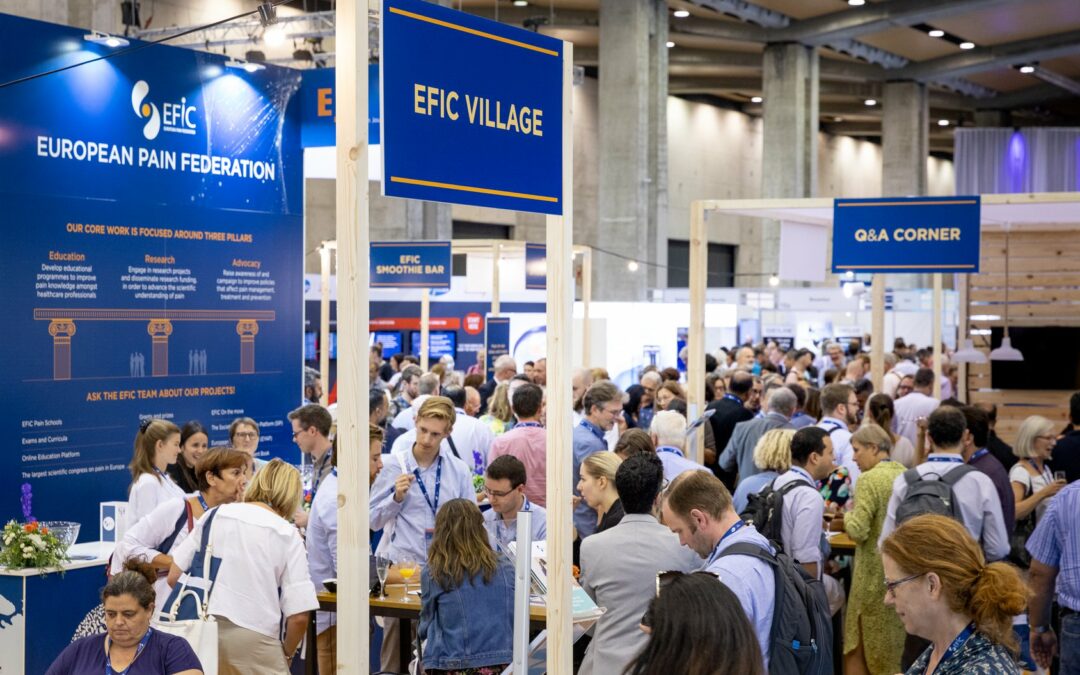Are you a basic or preclinical pain researcher? Then sign up for #EFIC2022 right away!
The next EFIC Congress taking place in Dublin, Ireland on 27-30 April 2022 is a great opportunity for researchers as it provides them with a large international network of health professionals from all over the world. During dedicated face-to-face networking sessions, researchers will have the opportunity to discuss ideas and findings from their basic/pre-clinical work with clinicians with expertise in different areas of pain.
At #EFIC2022, each plenary session will consist of 3-4 talks bridging basic and clinical research. Basic/preclinical research talks will include topics exploring why we sleep, mechanisms by which biologics can alleviate pain, the role of peripheral nociceptors in acute and chronic pain, and more.
Use this opportunity to move knowledge from the bench to the bedside for the benefit of patients. Register for #EFIC2022 now and find out how basic and clinical researchers present their findings together and network with each other!
Discover the basic science/pre-clinical sessions at #EFIC2022:
| Date and time | Session | Talks |
| Wednesday, 27 April 2022, 10:30 – 12.00 | A Translational approach to painful diabetic polyneuropathy: new emerging pathophysiological mechanisms, diagnostic tests-based stratification, and therapeutic challenges | Molecular mechanisms underlying painful diabetic neuropathy |
| Wednesday, 27 April 2022, 10:30 – 12.00 | Cerebrospinal fluid flow and the glymphatic system in pain: implications for pathophysiology and pharmacotherapy | Physiology and anatomy of the glymphatic system in rodents, pigs, and humans |
| Wednesday, 27 April 2022, 14:30 – 16:00 | Bench to bedside and back again: challenges, opportunities and examples of translational pain research |
The reality of reliably translating bench and bedside measures: Paradigm considerations From healthy volunteers to patients: focus on NMDA antagonists |
| Wednesday, 27 April 2022, 13:00 – 14:30 | From the blood to the skin: innovative targets in the pathophysiology of complex regional pain syndrome | |
| Wednesday, 27 April 2022, 10:30 – 12.00 | From understanding the sleep-pain interaction to the treatment of the comorbidity | Cortico-autonomic local arousals and heightened somatosensory arousability during NREMS of mice in neuropathic pain |
| Thursday, 28 April 2022, 12:30 – 14:00 | Novel tools for pain relief in the 2020s | |
| Thursday, 28 April 2022, 09:30 – 11:00 | Non-invasive neuromodulation – from the lab to practice and back to the lab: translational insights into a novel treatment approach | |
| Thursday, 28 April 2022, 14:30 – 16:00 | Investigating pain in parkinson’s disease: insights from the bench and bedside | |
| Thursday, 28 April 2022, 14:30 – 16:00 | Functional biomarkers of nociceptive signal processing – back-translation of human studies to preclinical models | Back-transability of central sensitization models |
| Thursday, 28 April 2022, 09:30 – 11:00 | Bone pain research: new findings and methodologies | Mechanistic insights from preclinical studies of bone pain |
| Thursday, 28 April 2022, 14:30 – 16:00 | miRNAs |
miRNAs in preclinical models 15 years of miRNA in pain research – chances and limits |
| Saturday, 30 April 2022, 08:30 – 10:20 | Depression and pain |
DEPRESSION AND PAIN: UNDERSTANDING THE BASIC MECHANISMS OF THIS COMORBIDITY |
| Saturday, 30 April 2022, 12:45 – 14:15 | Preclinical studies on trigeminal and vascular effects of cgrp and cgrp receptor binding monoclonal antibodies and small molecule cgrp receptor antagonists |
CGRP binding monoclonal antibodies modify trigeminal efferent functions |
